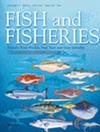Towards Implementing Multispecies Harvest Strategies That Are Robust to Interacting Populations
IF 6.1
1区 农林科学
Q1 FISHERIES
引用次数: 0
Abstract
A longstanding tenet of ecosystem‐based fisheries management (EBFM) is to account for trophic interactions given that all species exist as part of connected food webs. However, explicit incorporation of trophic interactions in tactical management models and decision‐making frameworks remains elusive. We draw on harvest strategy (HS) framework principles to advance the implementation of fisheries management that is Robust to Interacting Populations (RIP) and focus on simplifying and structuring it to be as pragmatic as possible. We posit that the objectives and the overall process can be structured using four main categories: (A) Whole‐of‐Ecosystem, which encompasses not exceeding the overall limits of system productivity and protecting overall ecosystem structure and function; (B) Identify and focus on key species and those with influential trophic connections that require more careful management because of the disproportional reliance of other species on these; (C) Species that interact with fisheries and are of conservation concern; and (D) pest or climate‐immigrant species with the objective of managing these to achieve desired outcomes for other (target) species in an ecosystem. For each category, we provide examples of the multispecies HS components required to inform decision‐making: indicators, data, reference levels, methods and decision rules, and identify common tools and opportunities. Finally, we summarise progress made and remaining gaps in our ability to collectively construct pragmatic guidelines for advancing EBFM and achieving RIP fisheries management to conserve marine ecosystem structure and functioning.实现对相互作用种群稳健的多物种收获策略
基于生态系统的渔业管理(EBFM)的一个长期原则是考虑到所有物种作为相互联系的食物网的一部分而存在的营养相互作用。然而,在战术管理模型和决策框架中明确结合营养相互作用仍然是难以捉摸的。我们利用捕捞战略(HS)框架原则,推进对种群相互作用(RIP)稳健的渔业管理的实施,并重点简化和构建其结构,使其尽可能务实。我们假设目标和整个过程可以用四个主要类别来构建:(A)整个生态系统,包括不超过系统生产力的总体限制,并保护整体生态系统的结构和功能;(B)查明并集中注意关键物种和具有有影响的营养联系的物种,因为其他物种过分依赖这些物种而需要更仔细地管理;(C)与渔业相互作用并具有养护意义的物种;(D)有害生物或气候迁移物种,目的是对这些物种进行管理,以实现生态系统中其他(目标)物种的预期结果。对于每个类别,我们提供了为决策提供信息所需的多物种HS组件的示例:指标、数据、参考水平、方法和决策规则,并确定了常见的工具和机会。最后,我们总结了取得的进展和我们在共同构建推进EBFM和实现RIP渔业管理以保护海洋生态系统结构和功能的务实指导方针方面仍存在的差距。
本文章由计算机程序翻译,如有差异,请以英文原文为准。
求助全文
约1分钟内获得全文
求助全文
来源期刊

Fish and Fisheries
农林科学-渔业
CiteScore
12.80
自引率
6.00%
发文量
83
期刊介绍:
Fish and Fisheries adopts a broad, interdisciplinary approach to the subject of fish biology and fisheries. It draws contributions in the form of major synoptic papers and syntheses or meta-analyses that lay out new approaches, re-examine existing findings, methods or theory, and discuss papers and commentaries from diverse areas. Focal areas include fish palaeontology, molecular biology and ecology, genetics, biochemistry, physiology, ecology, behaviour, evolutionary studies, conservation, assessment, population dynamics, mathematical modelling, ecosystem analysis and the social, economic and policy aspects of fisheries where they are grounded in a scientific approach. A paper in Fish and Fisheries must draw upon all key elements of the existing literature on a topic, normally have a broad geographic and/or taxonomic scope, and provide general points which make it compelling to a wide range of readers whatever their geographical location. So, in short, we aim to publish articles that make syntheses of old or synoptic, long-term or spatially widespread data, introduce or consolidate fresh concepts or theory, or, in the Ghoti section, briefly justify preliminary, new synoptic ideas. Please note that authors of submissions not meeting this mandate will be directed to the appropriate primary literature.
 求助内容:
求助内容: 应助结果提醒方式:
应助结果提醒方式:


